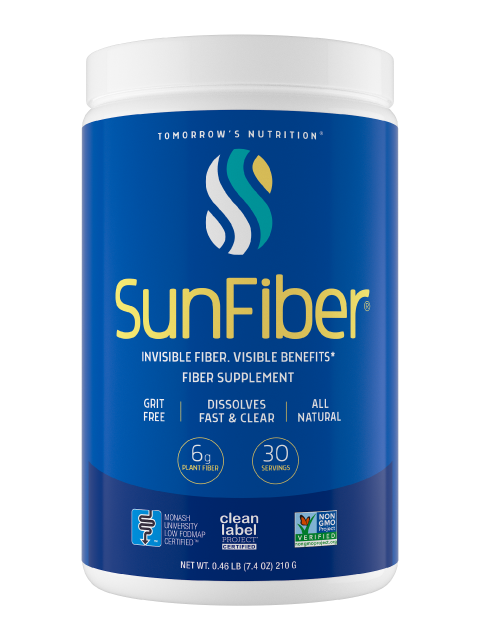We’re getting smarter all the time about dietary fiber and how it supports health. While your grandparents probably knew that fiber helps digestion, the word “prebiotic” didn’t start popping up in scientific literature until 1995 to describe the type of fiber that nourishes our probiotic (beneficial) gut bacteria including the Bifidobacteria and Lactobacillus groups.
We now know that prebiotic fiber plays an important role in everything from immune health to mood regulation. Prebiotic Sunfiber, a truly regulating fiber, uniquely improves both occasional constipation and occasional diarrhea.
Explains Registered Dietitian Nutritionist Derek Timm in this white paper, “Prebiotics classically were fibers that increased Bifidobacteria and Lactobacillus bacteria in the gut. More recently this definition has been expanded to include substances that are fermented by the microbiome resulting in health benefits. Sunfiber has data that supports both the classic and new definition of a prebiotic, all while being very well tolerated.”
How much prebiotic fiber should you eat?
How much should you be consuming? “To date, there is no daily value for prebiotics; however, you should target a dose clinically shown to improve the gut microbiome and provide a health benefit,” advises Timm. “This amount will vary based on the type of prebiotic you choose to consume so you can do a little research yourself or ask your healthcare professional for a recommendation. The recommended dose for Sunfiber is at least 5 g per day to help promote the Bifidobacteria levels in your gut and regularity.”
His advice changes if you’re starting a low-FODMAP diet to help reduce symptoms of IBS. “We all need 25 to 38 grams of fiber a day. Dietary fiber helps to regulate bowel habits, maintain healthy blood sugar and cholesterol levels, feed the gut’s “good” bacteria or probiotics and provide satiety and support weight management,” Timm explains in this low-FODMAP diet white paper.
“Most of us are already fiber deficient. Following a Low FODMAP dietary program reduces intake of prebiotic fiber, especially during the elimination phase. While you are limiting key fiber sources containing wheat, rye, barley and legumes, that low fiber intake may worsen the same digestive problems, such as constipation, that caused you to turn to Low-FODMAP foods in the first place.”
Sunfiber (also known as guar fiber) was the first fiber certified Low FODMAP by Monash University. This means individuals can confidently consume Sunfiber to meet their fiber needs without experiencing undesirable side effects of high FODMAP fibers.
Most traditional fiber supplements are high FODMAP, which can worsen digestive symptoms. Instead, the fiber deficiency can be addressed using a Low FODMAP fiber such as Sunfiber.
Download our free white papers, “The Prebiotic Effect of Sunfiber” and “Following a low FODMAP diet? Here’s what you need to know about dietary fiber” to learn more about the benefits of incorporating Sunfiber into your daily routine.



0 Comments